|
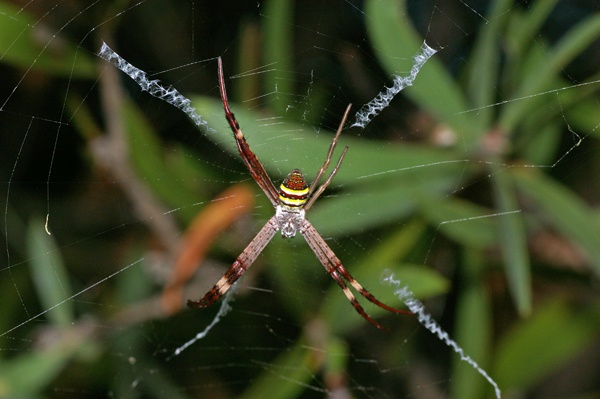
St. Andrews Cross Spider - showing the white cross pattern in the web. This spider appears to have lost two of its back legs and is growing new legs - see how the two back legs on the right of the photo do not match the others.
Photograph copyright: ozwildlife - all rights reserved. Used with permission.
|
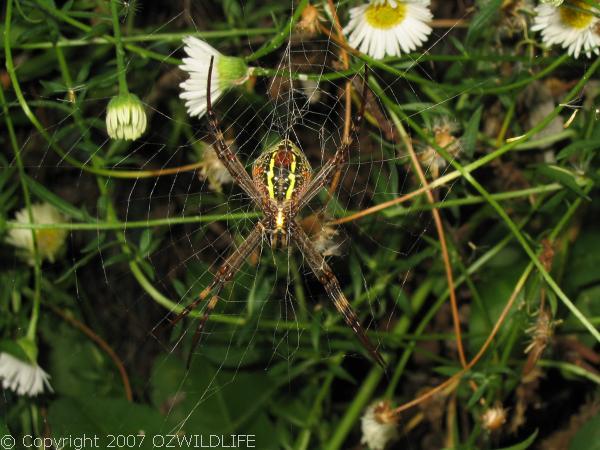
St. Andrews Cross Spider - underside. Photographed in daisy plant.
Photograph copyright: ozwildlife - all rights reserved. Used with permission.
|
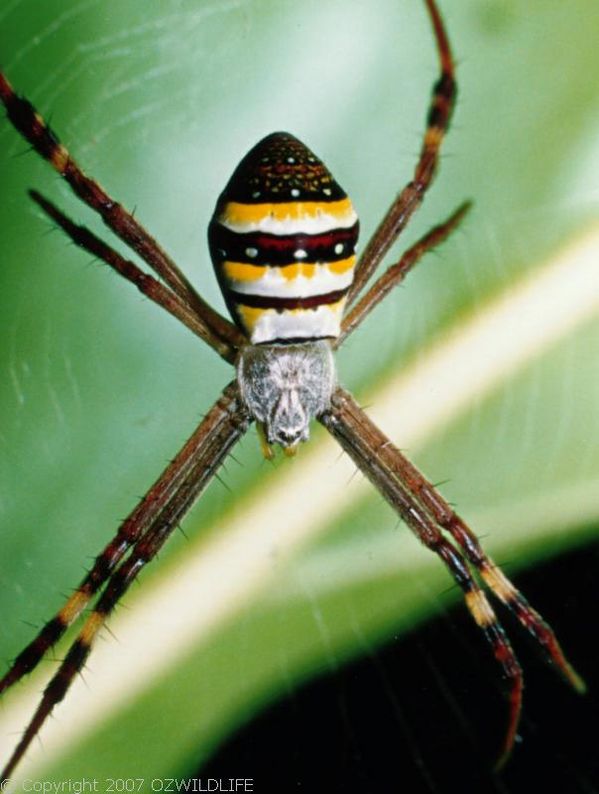
St. Andrews Cross Spider in web. These are fairly easy to photograph as they usually built their webs in easily accessible places within a couple of metres of the ground. They don't run away when approached either.
Photograph copyright: ozwildlife - all rights reserved. Used with permission.
|
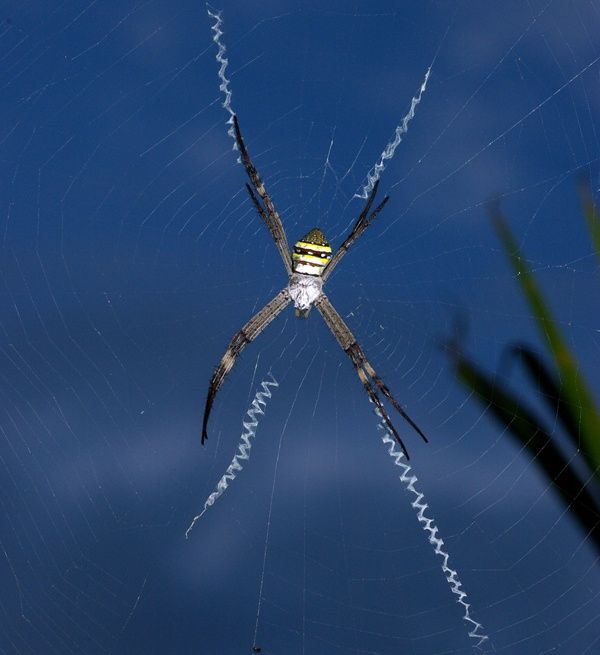
The Scottish Flag - that is why they are called St.Andrews Cross Spiders
Photograph copyright: ozwildlife - all rights reserved. Used with permission.
|
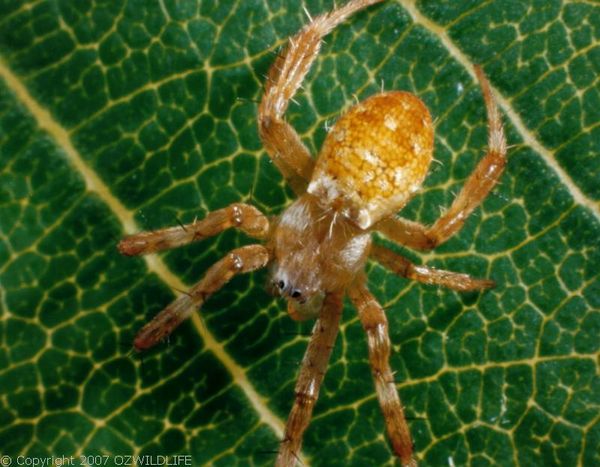
This could be an immature St. Andrews Cross spider ? Let me know if I'm wrong.
Photograph copyright: ozwildlife - all rights reserved. Used with permission.
|
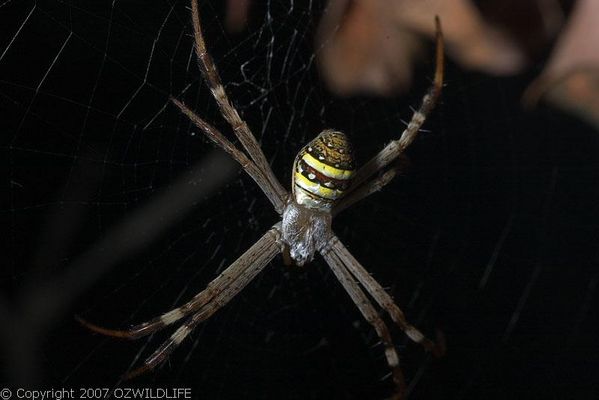
Small St. Andrews Cross spider in web at night
Photograph copyright: ozwildlife - all rights reserved. Used with permission.
|
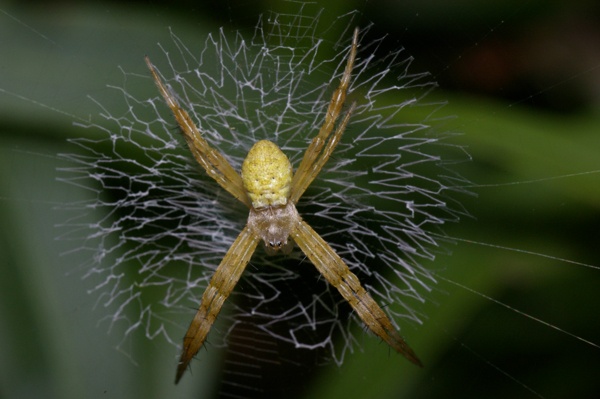
Immature St. Andrews Cross Spider - they make a small circular pattern of white threads in their web instead of the cross shape.
Photograph copyright: ozwildlife - all rights reserved. Used with permission.
|
|
|
SPIDER FACTS |
Description
St Andrew's Cross Spiders are named for the bluish-white cross-shaped pattern of silk through the centre of the web resembling the St Andrew's cross on the Scottish flag. Females have a silver, yellow, red and black banded upper abdomen with two longitudinal yellow stripes below. The spider sits with the legs in pairs. The males are brown and cream coloured and much smaller.
The web is medium-sized orb web, occupied day and night, on low shrubby vegetation. Young spiders are tan or creamy brown in colour and do not make a cross-shaped pattern in their web.
Size
Female 10 - 16 mm body length. Male 3 - 4 mm.
Habitat
Rainforest margins to open forest and heathland, and suburban gardens. Usually seen in low bushes.
Food
flies, moths, butterflies, bugs and bees
Breeding
Mating occurs in summer-autumn. One or more males sit in the upper parts of the web. The male constructs a mating thread within the web, and attracts a receptive female by vibrating the thread. The female suspends its pear-shaped egg sac in a network of threads, often among leaves where the sac's greenish silk disguises it.
Range
St Andrew's Cross Spiders are found across Australia, including Tasmania.
Notes
The bite of the St Andrews Cross is of low risk to humans.
Australian Museum Online note www.amonline.com
The role of the cross-like web decoration, called the stabilimentum, has long been a puzzle. At first thought to strengthen or "stabilise" the web, more recent ideas associate it with capturing prey or avoiding predators. The ribbon-like silk reflects ultra-violet light strongly. Such light is attractive to flying insects, which use it to locate food sources like flowers and to navigate through openings in the vegetation. If the stabilimentum silk attracts insects it may increase the web's prey catching efficiency. The silk decoration could also make the web and its owner more obvious to day-active predators like birds and wasps.
Classification
| Class: | Arachnida | | Order: | Araneomorphae | | Family: | Araneidae | | Genus: | Argiope | | Species: | keyserlingi | | Common Name: | St. Andrews Cross Spider |
|
|

